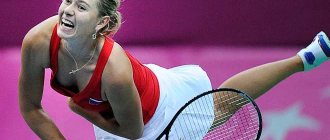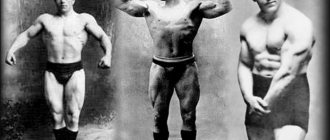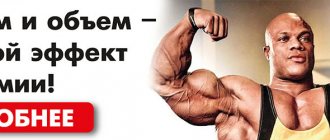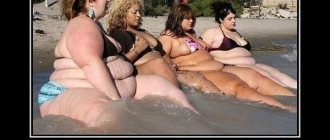The first training I took was called “Step into the Future.” Russified analogue of Lifespring. Late 1997 – early 1998. The training cost about $350 and attracted three hundred people. One of the conditions for moving to the next stage was the involvement of others in the process. This bothered me and I had to pay for those involved myself.
There were funny stretches: you had to do something that was contrary to your nature. They radically changed their appearance, shaved off beards and mustaches worn for decades, and wore clothes of the opposite sex during training. I remember that, on “assignment,” I asked for “alms” in the passage on Arbat near the Khudozhestvenny cinema. The girls thought it was a way to get acquainted and tried to get away not with money, but with a phone number.
Some participants took the ideas they heard too literally. The thoughts “If you want to earn a million, do as millionaires do” in my picture of the world corresponded to risk and hard work, but my friend borrowed money and went on vacation as a millionaire to Paris...
Having completed the first and second stages of the training, I did not complete the third, so-called leadership program: I was removed, apparently, for excessive leadership qualities and too “smart” questions. According to the existing rule, if someone asks questions that “destroy the fabric of the training,” the trainer has the right to remove him...
I think that the presenters had no malicious intent. As well as basic psychological education. People simply copied a successful American training...
INVITATION TO YOUR OWN FUNERAL
There were other funny trainings. How can I forget my funeral and resurrection at Maestro Ts., who pretended to be Woland? Mirrors curtained with black cloth, a secretary with a mournful face, a coffin placed in the middle of a large room.
We, who came to the training and did not know each other, wrote “epitaphs” for ourselves to warm up. I remember writing: “I’m done with being too serious” and “I’m happy, and you?” Then we were “buried” one by one. They covered the lid of the coffin, knocked on the lid with their knuckles, imitating the sounds of the earth, lifted the coffin and slightly rocked it in their hands. Apparently, this was supposed to symbolize “swimming” through Lethe. It looked a little comical, which spoiled the entire solemn and mournful atmosphere.
Then the Maestro himself stood up and solemnly announced that grace had descended and the deceased Ivan Ivanovich had been resurrected. Personally, I didn’t have time to experience the horror - everything was too fast, but I shed tears when I was “resurrected.” And for the rest of the day and the next I felt much more alive than before I was buried.
After all, “we are all mortal, but not all of us are alive.”
What I liked most was the body-oriented training “Touching the Power”. Walking on coals, beating a shaman's tambourine, summoning your totem animal, steaming in an Indian bathhouse "inipi", body art, almost an hour-long Oshev-Sufi whirling around its axis. Earth, water and fire, touching them transported them to another reality and “connected” them to the energy of the elements.
Training on photo posing or how to like yourself in a photo
Who is the training for?
Who needs new poses for business, life or thematic photos
Who wants to get rid of the fear and constraint of the camera?
Who is tired of monotonous photographs?
What do we do?
Analysis of old photos| Body sensation| Emotions | Comfortable poses | Winning poses |New photos | Joy from the work done 1. We will analyze your habits using old photographs as an example, and find what you like and don’t like about your photo images. 2. We will awaken emotions, feel the body and learn to forget about the camera, even if it is aimed at you. 3. We will look for comfortable poses, analyze what should be shown to you and how to show it advantageously, and what is better to hide. 4. We will learn how life photography on a phone differs from staged photography. What should be the look and where to direct it. How to pose in heels...
5. Yes, we will have a professional photographer). Of course, there will be practice and more practice! By the way, you can download the reportage and staged photos that we will take during the master class from the link after the event and use them))
When and how much does it cost?
I'm waiting for you on Sunday August 12th
At 16:00 Duration: 3 hours Seats are limited! Each participant is given special time and attention! The cost of participation in the master class is 3000 rubles. On the day of the event 3500 rub.
*pre-registration is required!
**Ask any question to me by email [email protected]
What to wear and what to take with you?
Dress in beautiful, bright, but comfortable clothes. Choose what you like, because after the master class you will have photographs. Give preference to trousers/jeans, because... we will try different positions, we will sit, stand, maybe lie down).
Don’t forget about makeup: apply tone, highlight your eyes, highlight your cheekbones and lips. We won’t have a special make-up artist, because we will get together to work on the body. But you will be pleased to look at the photo later! Be sure to take a change of shoes (the hall is always clean): 1. low-heeled shoes (ballet flats, sneakers, slip-ons, but not sneakers!!!) 2. high-heeled shoes.
And, of course, take a good mood! You will fly on wings)!
Where?
Dance club Danza Feliz
metro station Airport or Sokol (5 min walk) st. Liza Chaikina, 6, entrance from the yard next to the 2nd entrance! Please clarify any questions via (Viber, Wahts App)
Who am I? and Why me?
My name is Irina Patrikeeva. I am not a fashion model, photographer or stylist. I am an actor, director, choreographer and dancer. For the last 10 years I have been organizing, staging and hosting events. I have over 2,000 festive and business events for adults and children.
My experience, knowledge and artistic taste allow me to see the whole picture from the outside and at the same time feel whether it corresponds to the concept. In the most relaxed atmosphere, I will help you learn how to use your body and feel at your best during any photo shoot.
Join us! Click “Buy a ticket” and change yourself and your photos for the better!
WHAT IS GOOD?
Let me make a reservation once again that we are talking about trainings that claim to deeply transform a person, and not about trainings aimed at developing skills. Although, from my point of view, successful deep transformation is only possible with the help of psychotherapy, group or personal. Of course, I cannot give exhaustive advice to those who want to change, but some considerations boil down to the following.
- A good training should be conducted by a person with at least a psychological background.
- The trainer must be certified in the area taught.
- It is desirable that the center that issued the certificate has international accreditation.
- Directive trainers and trainings are dangerous.
When a person who calls himself a specialist assures that he knows exactly how to live, when this or that idea is obsessively instilled, this is, as a rule, a reflection of the unprocessed psychological trauma of the coach himself.
The more charismatic the leader, the more dangerous and destructive he is for the participant’s personality.
If you look at it, the danger is the dependence on the training and the personality of the leader, when a person feels comfortable only in a limited training space.
Normally, training should adapt a person to solving real life problems, and not those invented by someone’s fevered imagination. As I now understand, a lot was done to ensure that we were in an altered state of consciousness, in a light trance. And in a trance, as is known, a person is hypnotizable and much more suggestible.
It is advisable that the trainer himself regularly undergoes developmental psychotherapy and understands why he himself needs training.
It seems to me that for business coaches it is important not only a certain number of hours of specialized training, but also the number of hours of personal psychotherapy. This helps the presenter to be aware of his internal processes and distinguish them from external ones. Otherwise, there is a risk of the coach acting out unprocessed problems in the group. Many guru trainers turn into kangaroo trainers, carrying personal complexes (unprocessed guilt, resentment, shame, etc.) in their “bags”.
Training design. How to create interesting and effective trainings (Yuri Kurilov)
The process of coming up with ideas
Perhaps you have no problems generating ideas and they come to you once or twice. But if you are experiencing difficulties, then I can offer you an algorithm that will make this task easier for you.
What should be done?
• Describe a specific global goal (arrival point).
I recommend always describing a specific global goal, or point of arrival. The global goal is not a single product, but your entire project, when you help people move somewhere. And this arrival point may have a name and certain criteria. For example, as part of my project, I help people move towards successful information businesses, and by this I mean that my clients earn over a million, they love what they do, they do it in an ethical way, they and their clients benefit from it and are constantly growing.
• Describe the main actions - stages, steps that need to be taken to achieve this goal.
We formulate what needs to be done in order to reach the arrival point. That is, we break the entire path into stages, and the stages, in turn, into steps and describe them.
• Describe intermediate results.
For each of the steps described, we must formulate the expected result. What step is taken - what result is obtained. We describe the results of each step.
• Describe the main problems.
After the expected results, we must formulate the main problems that our clients may encounter at each stage, at each step.
• Choose an intermediate goal that would be desirable for your audience.
When we have created a description of our client’s movement to the point of arrival, which we will call the “global goal,” we have a fairly comprehensive vision of the path that he has to go through. And then we think, “Okay, what outcomes would most inspire my client along the way? What results would he most likely want to achieve before reaching his end point? What results, described or not yet described by me, might he like?”
Of course, you can address the audience and conduct a survey, but when the entire path is already before your eyes and you have a good idea of each stage, you already understand what intermediate results your audience will probably like. If you are doing training for beginners, then most likely you will get these results at the beginning. If this is a product for a more advanced audience, then most likely the results will be closer to the end of the journey.
• Determine duration and format.
Next, you determine the duration and format of your training. And once you have determined this, you can change them depending on the situation. If the audience is already close to the result, then less time will be needed. If the result is still far away, much more time may be needed. Here you should estimate approximately how much time it takes for the most active members of your audience to achieve results. That is, people will take your course seriously and thoroughly and make achieving this goal a priority.
Psychological trainings: how to choose?
Psychological training: solution or trap?
Psychological trainings are a powerful impetus to a new life, an effective way to change yourself, a source of new knowledge and... a great way to make money! A lot of specialists, psychotherapists, and trainers receive their earnings completely honestly and legally. But along with useful psychological trainings, you can also find a lot of fraudulent and harmful courses.
WomanJournal.ru talks about how to choose good personal growth trainings that will really change your life for the better, and how to expose scammers whose courses are not only not useful, but can also be dangerous!
Let's start with the basics! Surely, you have heard more than once terrible stories about how, after psychological training, people began to go crazy, they fell into depression, changed for the worse, and in the most extreme cases even committed suicide. Hence the question: why are there so many fraudulent schools and dangerous trainings? And why do so many people fall victim to them? Yes, because the trainings are taught by professional “think tanks,” i.e., professional manipulators. And people who come to the training are usually not in the best condition (anxiety, low self-esteem, depression), and they are easy prey. The manipulator promises them “salvation” and “new life.” Well, people are traditionally willing to pay for hope for a new life...
How to find good psychological trainings and distinguish them from fraudulent ones?
Start with your own mini-research. Ask your friends, maybe someone can recommend good courses. At the same time, look carefully at the person you know most: if a friend with an enthusiastic sparkle in her eyes tells how such and such a training helped her, and meanwhile she herself has problems at work, her husband has gone on a spree, her health is not so great, you should not listen to such a recommendation.
Always look up to happy, harmonious and successful people. Such people can be clear evidence that the training is good and effective. You can also read reviews of psychological training in magazines (but reviews on the website of the training itself may be written by fake people, so you shouldn’t pay attention to them).
How to distinguish effective training from dangerous?
You can go to psychological training with a popular psychotherapist. Such people have already made a name for themselves. They publish books and appear on TV. Their training may cost more, but it is an almost guaranteed way to avoid a scam, because public people do not need a scandal.
However, when you come to an unfamiliar school to sign up for psychological training, you can figure out what’s what yourself. The main thing is to follow simple safety precautions:
Feel free to ask everything that interests you and everything that you don’t understand. You have the right to know who will train you, what qualifications the person has, what experience, etc. You can talk to someone who has already completed such training (people who like the result of the training often sign up for higher level training in the same school). If you feel that they are answering you evasively or irritably, leave!
Pay close attention to how they communicate with you before or during psychological training. If they try to shame, make you feel guilty, or intimidate, turn around and leave - these are typical techniques of manipulators. For example: “If you don’t complete this training now, your husband will leave you,” etc.
Good trainers tend to be very clear and accessible. If the trainer pretends to be a great guru, speaks in riddles and, in response to your questions and requests to explain something incomprehensible, hints that “not everyone can know the truth,” find yourself another psychological training and another teacher!
The most important thing is, when you get to the training, listen to yourself carefully! Of course, training does not always involve situations that are comfortable for you. The tasks are different. For example, asking for alms from passersby, dancing in the middle of the street (a great way to get rid of the idealization of public opinion). Or climb onto a stepladder and fall backwards into the arms of the rest of the group (trust exercise). Remember, during trainings you will constantly be challenged. But only you can decide whether you are ready to accept it or not yet. Personal growth should be carried out at the speed that is comfortable for you! And if they put pressure on you, try to force you to do something, intimidate or manipulate you - leave! Trainings should bring joy, inspiration, relief!
Author: Victoria Isaeva, especially for WomanJournal.ru
Photo: Shutterstock
STUDENT WORKS
2020 - The “DNA” photo series was awarded a State Scholarship from the Ministry of Culture of the Russian Federation for cultural and artistic workers.
2019 — Photography “1812” — 1st place in the “Single Photography” nomination, and the photo series “DNA” — 2nd place in the “Photoseries” nomination, Transitional [time] competition of the International Biennale of Photography PhotoVisa 2020. Applications for the competition were received from 79 countries.
2019 - Laureate of “Transversalidades - Fotografia sem Fronteiras 2019” (Portugal). The photo series “Apocrypha” was awarded the honorary prize “Transversalities Winner of an Honorable Mention of Theme 1: Natural heritage, landscapes and biodiversity.” The purpose of the competition is to show the diversity of territories, societies and cultures in different countries and a look at the changes taking place in different parts of the world. More than 800 photo projects from 70 countries took part.
2019 - The “Sisters” photo series and the “Immutable” photo series were shortlisted for one of the most authoritative world competitions, Felix Schoeller Photo Award 2020 (Germany). The competition aims to develop creative photography and contemporary photography. In 2020, famous photographers from 113 countries submitted works to the competition.
2019 - 1st place in the Mobile Photography category, topped the TOP 100 and TOP 35 of the 4th photo award 35AWARDS 2020. 112,000 participants from 172 countries took part in the competition. In total, the authors uploaded 392,000 photos.
2019 — Photo series “DNA” — finalist of the 7th Annual Nikon Russia photo competition. The photo series was presented in the “Looking into the Future” category, revealing the authors’ views on technology and innovation in science, everyday life, technology, medicine, sports or culture, a new look at the future of the planet. 4,359 participants sent 27,679 photographs and photo series to the competition.
2019 - The photo series “Neryadovo” took 3rd place in the main competition “Today’s Day” within the framework of the IV International Photo Festival named after. S. Yurkovsky "Photocroc" in Vitebsk (Belarus). The competition was attended by 292 authors from 119 cities in 15 countries (Armenia, Belarus, Germany, Israel, Kazakhstan, Kyrgyzstan, Lithuania, Poland, Russia, USA, Tajikistan, Uzbekistan, Ukraine, Montenegro, Estonia), 1495 single photographs and 154 series
2019 - Photo series “Points of no return” - finalist of HIPA 2018-2019 (the largest photographic competition in the world). The theme of the competition is “Hope”. Hamdan International Photography Award (HIPA) is an international photography competition founded in 2011, with a prize fund of about 400 thousand US dollars.
2019 - The photograph “1812” was awarded the “Special Jury Prize” (Felix Inden Prize) of the international competition of photographs taken using filters International Filter Photo Contest 2020 (IFPC) from Kenko-Tokina.
2018 — Laureate of the international photo competition Transversalities 2018 (Portugal). The photo series “Netsuke” received the honorary award “Transversalities Winner of an Honorable Mention of Theme 1: Natural heritage, landscapes and biodiversity.”
2018 - The “Apocrypha” series was included in the shortlist (24 participants) of the international photo award Alfred Fried Photography Award 2020 (Vienna, Austria). Photographers from 122 countries participated. 5114 participants. 15763 images. Organizers of the Alfred Fried photo competition call for a focus on world peace.
2017 - The photo “11:07” was among the winners and took 3rd place in the “Stories in Faces” category of the international photo competition “New Look. Transforming through the centuries”, conducted by the State Hermitage and the State Museum-Monument “St. Isaac’s Cathedral” with the support of the Government of St. Petersburg.
2017 — Winner of the I International Competition “Russian Civilization”, held under the auspices of the FADN of Russia.
2017 - Prize-winner of the documentary photography competition “Direct Look” 2020. 2nd place in the “Compromise” category was awarded to the “Sisters” series.
2017 - Prize-winner of one of the largest photo competitions of the year, Nikon “I | AT THE HEART OF THE IMAGE 2017! 2nd place in the “Professionals – Series” category went to the photo series “Low Season”. The photo series is presented with landscape images of freeze-up on the Volga River.
2016 - Winner of the 2nd photo competition of the Russian Geographical Society “The Most Beautiful Country”. The photo “The Shore of the Jackals” won, in the category “The World is in Our Hands.” About 110,000 photographs from 23,000 authors were submitted to the competition.
2016 - GRAND PRIX of the International Competition of photographs taken using filters International Filter Photo Contest 2014-2015 (IFPC). The main prize of the competition was awarded to the photograph “Dancing in a Dream”.
2016 — Winner of the Epson “Planet of Color” photo competition. The photo “21:91” took 1st place in the “People” category. More than 9,500 photographs were submitted to the competition.
2016 - Winner of the annual photo project “The Best of Russia” (“Best photographs of Russia”) https://thebestofrussia.ru The photograph that received attention was: “Kalyazin. First snow." A total of 21,817 photographs were submitted to the competition.
2015 — Jury Prize of the All-Russian competition “Point on the map. Cities of the Russian Province” received in the “Single Photography” nomination. The competition is dedicated to the topic of small and medium-sized cities in Russia. A record number of works entered the competition. A total of 3,820 frames and 34 videos were uploaded. Authors from 159 cities took part in the competition.
2013 - Winner of the IV International Photo Competition named after Karl Bulla “Epochs Visible Features” in the “Photohistory” category. The winning series was “Neryadovo” (12 images), a series about a family, people from the abandoned and almost uninhabited village “Neryadovo” (Chuvashia). The competition was attended by 428 people from 15 countries (Azerbaijan, Armenia, Belarus, Germany, Israel, Spain, Kazakhstan, Lithuania, Portugal, Russia (105 cities), USA, Uzbekistan, Ukraine, France, Estonia. The jury selected the best of 1638 works .
2013 — Winner of the “Climate of Change” competition at the V International Photography Festival PHOTOVISA. The “Sisters” series took 1st place in the “Social climate” category. Changes".
2013 - Laureate in the LANDSCAPE category, competition "RusArtPhoto-2013", dedicated to the International Photography Festival in Suzdal. 1st place in the LANDSCAPE nomination, works “Beach of the Jackals”, “1812”. 7,000 works by 547 authors participated.
2012 — Finalist of the first open national photo award “Best Photographer 2011.” (https://bestphotographer.ru) More than 34,000 works were submitted from 11,000 participants. The final included a series of 12 works “Unsaid...”
2011 - laureate of the competition “YOUNG PHOTOGRAPHERS OF RUSSIA-2011” + a separate audience award from the Union of Photographers of Russia. State scholarship recipient in the field of culture and art 2011
More complete list of achievements











